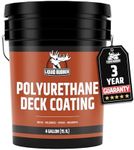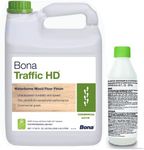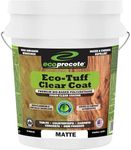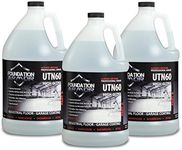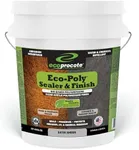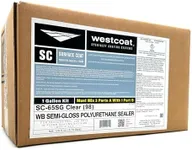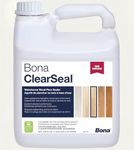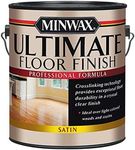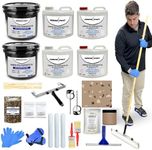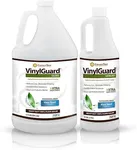Buying Guide for the Best Polyurethane For Floors
Choosing the right polyurethane for your floors is crucial to ensure durability, appearance, and ease of maintenance. Polyurethane is a protective finish applied to wood floors to enhance their longevity and aesthetic appeal. When selecting the best polyurethane for your floors, consider the type of finish, the level of durability required, the ease of application, and the overall look you want to achieve. Understanding the key specifications will help you make an informed decision that suits your specific needs and preferences.Type of PolyurethanePolyurethane comes in two main types: oil-based and water-based. Oil-based polyurethane provides a rich, warm glow and is highly durable, making it ideal for high-traffic areas. However, it takes longer to dry and has a stronger odor. Water-based polyurethane dries faster, has a milder odor, and maintains the natural color of the wood, making it a good choice for lighter woods or if you prefer a clear finish. Choose oil-based for a traditional look and high durability, and water-based for a quicker application and a more natural appearance.
DurabilityDurability refers to how well the polyurethane can withstand wear and tear, scratches, and other damage. Oil-based polyurethanes are generally more durable and better suited for high-traffic areas like hallways and living rooms. Water-based polyurethanes, while slightly less durable, are still robust enough for most residential applications and are easier to maintain. Consider the level of foot traffic and potential for damage in the area where the polyurethane will be applied to determine the appropriate level of durability needed.
Sheen LevelThe sheen level of polyurethane affects the final appearance of your floors. Sheen levels range from matte to high-gloss. Matte finishes provide a more natural look and hide imperfections better, making them suitable for rustic or casual settings. Satin finishes offer a slight sheen and are the most popular choice for their balance of appearance and practicality. Semi-gloss and high-gloss finishes provide a shiny, reflective surface that can make a room look more formal and elegant but may show scratches and dust more easily. Choose a sheen level based on the desired aesthetic and the amount of maintenance you are willing to perform.
Drying TimeDrying time is the amount of time it takes for the polyurethane to dry and cure. Oil-based polyurethanes typically take longer to dry, often requiring 24 hours between coats and several days to fully cure. Water-based polyurethanes dry much faster, usually within a few hours, and can be recoated the same day. If you need to complete your project quickly or have limited time to keep the area off-limits, a water-based polyurethane may be the better choice. Consider your timeline and the convenience of application when evaluating drying times.
Ease of ApplicationEase of application refers to how simple it is to apply the polyurethane to your floors. Water-based polyurethanes are generally easier to apply because they dry quickly and clean up with water. Oil-based polyurethanes require mineral spirits for cleanup and have a longer drying time, which can make the application process more time-consuming. If you are a DIY enthusiast or prefer a straightforward application process, water-based polyurethane may be more suitable. For professional results and a more durable finish, oil-based polyurethane might be worth the extra effort.
Environmental ImpactThe environmental impact of polyurethane is an important consideration for eco-conscious consumers. Water-based polyurethanes have lower levels of volatile organic compounds (VOCs), making them a more environmentally friendly option with less odor and fewer health risks. Oil-based polyurethanes contain higher VOC levels, which can contribute to indoor air pollution and require proper ventilation during application. If minimizing environmental impact and ensuring indoor air quality are priorities for you, opt for a water-based polyurethane.

